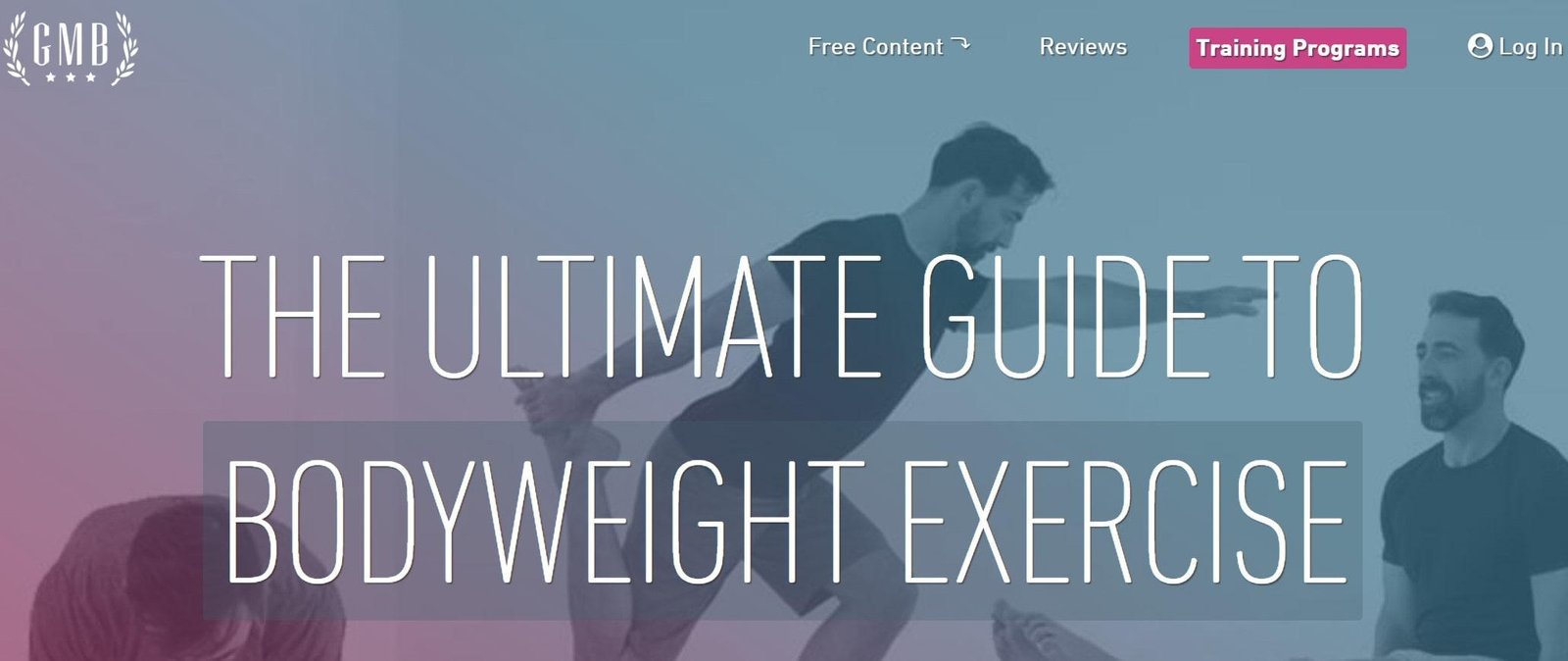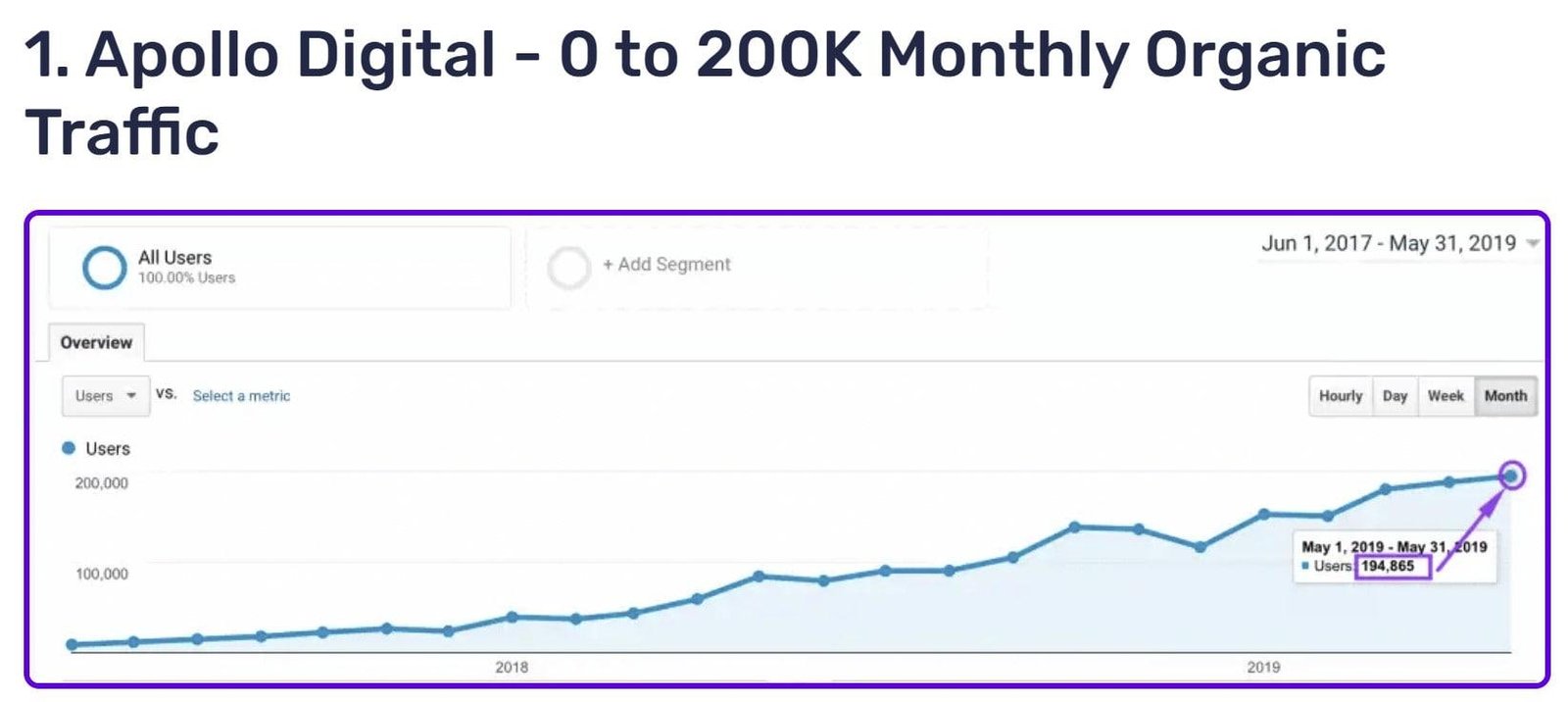Keep writing the same type of blog posts, and there’s no denying that you’ll eventually bore your readers. Plus, you’ll wear yourself out too.
Needless to say, if you want to keep your blog interesting, planning a variety of content is important. Luckily, there are different kinds of content you can write.
Now, just knowing the types is not enough. You should be able to do justice to each type. That’s where looking at real, proven blog post examples can help.
In this article, I am going to show you several blog post formats with examples. You can use this list as inspiration to generate your own blog post ideas, and to see how to properly write different types of blog posts.
Disclaimer: If you buy any products through links on this site, I may earn a commission. But it doesn't make any difference to your cost, and it helps me keep this blog running. So you could always read my articles for free.
Components of a typical blog post
Regardless of the type of blog post you’re creating, or the audience you’re targeting, most blog post examples boil down to the following key components on a basic level.
Blog post title: It’s the topic that hooks your audience and makes them aware of what the blog post is about.
Introduction paragraph: This is a short description of what the post is about. It serves as a teaser that encourages readers to continue reading the blog post.
Body content: This is where the rubber meets the road. The body content is where you deliver on the promise that you made in the title and introduction. And you do that by delivering substantial information.
Conclusion: The aim of the conclusion is to summarise the blog post, encourage readers to act on the material, and engage them further with a call to action.
Types of blog posts (with examples)
If you’re stuck on what to publish on your blog, you can’t go wrong with these proven blog post formats. Most examples of blog posts you read on the web fall into one of these popular categories.
Ultimate guides
The first type of blog post is the ultimate guide, which is a comprehensive, in-depth resource that talks about a subject from start to finish. It’s designed to be the go-to source for readers who want to learn everything about a particular subject.
What makes it great is its ability to provide immense value, attract organic traffic, and establish your authority on the topic. For example, take a look at the ultimate guide to bodyweight exercise.

To write an ultimate guide, start by selecting a topic that your audience is deeply interested in. Break down the content into clear, organized sections, and use subheadings to guide the reader. Include actionable tips, examples, and visuals to enhance understanding.
For example, if you’re writing an ultimate guide on social media marketing, you might cover platforms, strategies, tools, and case studies in separate sections.
Ensure the content is well-researched and up-to-date, offering insights that readers can apply immediately. By delivering a thorough, valuable resource, you’ll keep readers engaged and encourage them to return for more.
Listicle blog posts
The listicle blog post format presents information in a list, making it easy for readers to digest and navigate.
These blog post examples are great because they break down complex topics into bite-sized, actionable points, which can increase engagement and shareability.
To write an effective listicle, start with a catchy headline that clearly states the list’s purpose, such as “10 Tips for Boosting Productivity” or “7 Best Apps for Managing Finances.”
Organize your content into a numbered list, ensuring each item is concise and valuable. Use bold subheadings for each point to enhance readability. Include examples, visuals, or links to further resources to add depth to your content.
For example, if you’re writing a listicle about healthy eating, you could list “5 Quick Breakfast Recipes” with brief descriptions and images for each.
By making your listicle informative, engaging, and visually appealing, you’ll capture your audience’s attention and encourage them to read through the entire post.
Product review blog posts
The product review blog post provides an in-depth analysis of a specific product, helping readers make informed purchasing decisions. This Canva review is a good example of this blog post type.
It’s great because it offers valuable insights, builds trust with your audience, and can drive conversions through affiliate links or recommendations.
To write an effective product review, start by introducing the product and its purpose. Highlight key features, pros and cons, and compare it to similar products in the market. Share your personal experience or results to give the review authenticity. Use images, videos, or screenshots to visually support your points.
For example, if you’re reviewing a new smartphone, you might discuss its camera quality, battery life, design, and price. Include details like “The camera delivers sharp images even in low light,” and contrast it with a competitor’s model.
Conclude with your overall verdict, recommending who would benefit from the product. Additionally, you can also refer to examples of blog posts that showcase similar reviews to enhance your content.
This blog post format not only informs your readers but also positions you as a trusted source for product advice.
Promotional blog post
Another blog post type is promotional blog post, which is a content piece designed to highlight and promote a product, service, event, or offer.
Examples of blog posts in this category blend valuable information with a clear call to action, encouraging readers to take the next step, whether that’s making a purchase, signing up, or attending an event.
To write an effective promotional blog post, start by identifying your audience’s needs or pain points. Introduce your product or service as the solution, detailing its benefits and unique selling points.
Include testimonials, success stories, or case studies to build credibility. Make the post engaging with visuals, infographics, or videos that showcase what you’re promoting.
For example, if you’re promoting an online course, you could write about how it helps professionals advance their careers, include quotes from satisfied students, and offer a limited-time discount.
End with a strong call to action, like “Enroll now to secure your spot.” This approach not only promotes but also persuades readers to act.
Comparison blog posts
A product comparison blog post evaluates two or more products side by side, helping readers decide which one best meets their needs. Here’s an example of a blog post about a comparison of two social media tools, Buffer vs Sprout Social.
This type of blog post offers direct, actionable insights and simplifies the decision-making process for your audience.
To write an effective product comparison, start by choosing products that are similar in category but differ in features, pricing, or performance.
Introduce the products and outline the key criteria you’ll use for comparison, such as price, quality, features, and user reviews.
Create a comparison table to visually break down these criteria, making it easy for readers to see the differences at a glance. You can find inspiration from various examples of blog posts that demonstrate product comparisons.
For example, if you’re comparing two laptops, you might evaluate aspects like battery life, processing power, and display quality. Discuss the advantages and drawbacks of each product, and offer your recommendation based on specific user needs, like “best for gaming” or “ideal for budget-conscious buyers.”
Product alternatives
A product alternatives blog post highlights other products that serve as viable substitutes for a popular or well-known item.
It offers readers options, especially if the original product is too expensive, unavailable, or doesn’t meet all their needs. Here’s a blog post example about Grammarly alternatives and competitors.
To write an effective product alternatives post, start by identifying a popular product and then research alternatives that offer similar benefits. Introduce the main product and explain why someone might look for alternatives, such as cost, features, or availability.
List each alternative with a brief description, highlighting how it compares to the original product in terms of price, quality, and features.
For example, if you’re discussing alternatives to the iPhone, you might suggest Android models like the Samsung Galaxy or Google Pixel, explaining how each offers comparable performance at a different price point.
Conclude with a recommendation based on different user needs, like “best budget option” or “best for photography.” This blog post format helps readers find the best product that fits their requirements.
Product listicles
A list of products blog post compiles a selection of related items, often centered around a specific theme or need. It’s great because this blog post type offers readers curated options, saving them time and helping them make informed decisions.

To write an effective list of products post, start by choosing a relevant topic that aligns with your audience’s interests, such as “Top 10 Laptops for Students” or “Best Skincare Products for Sensitive Skin.”
Research and select products that meet your criteria, ensuring diversity in price, features, and brands. Organize the list logically, either by ranking or categorizing based on specific needs, such as “best budget,” “most durable,” or “best overall.”
Include a short overview of each product, highlighting key features, pros, and cons. Use images or links to the products for easy access.
For example, in a post titled “Best Camping Gear for Beginners,” you might list essential items like tents, sleeping bags, and portable stoves, explaining why each is a good choice for new campers. This blog post style helps you provide value by guiding your readers toward the best options for their needs.
Product tutorial blog posts
A product tutorial blog post guides readers through using a specific product, helping them maximize its features and benefits.
This type of blog post adds value by providing step-by-step instructions, making the product more accessible, and increasing user satisfaction.
To write an effective product tutorial, start by clearly stating what the tutorial will cover and the expected outcome. Break down the process into clear, actionable steps, using simple language and avoiding jargon.
You want to let the readers follow along easily. Include screenshots, images, or videos to visually support each step of using the product.
For example, if you’re writing a tutorial on using a DIY design tool like Canva, you could guide readers through creating a social media post, from selecting a template to adding text and images.
Highlight tips and tricks along the way to enhance their experience, such as “how to quickly align elements” or “using color palettes effectively.”
Conclude with a summary or additional resources for further learning, ensuring your readers feel confident using the product.
Controversial opinion posts
A controversial opinion blog post presents a bold, often unconventional viewpoint on a topic, sparking discussion and debate. A great example of this blog post type is Marriage isn’t for you.

It grabs attention, engages readers emotionally, and can significantly boost traffic and shares, though such blog post examples may also polarize your audience.
To write a compelling controversial opinion post, start by choosing a topic you feel strongly about, where your opinion contrasts with mainstream views.
Clearly state your stance in the introduction, explaining why you hold this opinion. Use well-researched evidence, personal anecdotes, or logical reasoning to support your argument, addressing potential counterarguments to strengthen your position.
For example, if you believe “Social Media is Ruining Authentic Communication,” you might discuss how online interactions lack depth, citing studies on mental health impacts or sharing personal experiences.
Invite readers to leave comments and share their perspectives, but be prepared for differing opinions. Conclude by inviting respectful dialogue, making it clear that your intent is to provoke thoughtful discussion, not simply to be provocative.
How to guides
A how-to style blog post provides step-by-step instructions on completing a task or achieving a goal. It delivers practical value, guiding readers through processes with clarity and ease, making it a go-to resource for solving specific problems.
To write an effective how-to post, start by clearly defining the task or goal you’ll address. Divide the process into small steps, ensuring each step is detailed and easy to follow.
Use simple language and avoid jargon to make the content accessible. Incorporate visuals, like images or videos, to illustrate each step and enhance understanding.
For example, if you’re writing a how-to post on “How to perfectly bake a chocolate cake,” you might outline ingredients, preparation steps, baking tips, and troubleshooting common issues.
Include images of each stage, from mixing ingredients to the final product. End with a summary of key points or additional tips, encouraging readers to try the steps and share their results. This blog post style helps readers gain practical skills and boosts their confidence in completing tasks.
‘What is’ blog posts
A definition blog post focuses on explaining the meaning of a specific term, concept, or topic. It provides clarity and helps readers understand complex or unfamiliar terms, establishing your authority on the subject. Here’s an example of this blog post type about customer acquisition.

To write an effective definition blog post, start by clearly stating the term or concept you’ll define.
Provide a straightforward definition in the introduction, then expand on it by discussing its context, relevance, and any related concepts.
Use examples to illustrate the term in real-world scenarios, helping readers grasp its practical application.
Conclude by summarizing key points and offering additional resources for deeper exploration. This blog post style ensures your readers gain a clear, comprehensive understanding of the topic.
Case study/lessons learned blog posts
A case study blog post presents an in-depth analysis of a specific instance or project, highlighting challenges, solutions, and results. Here’s a case study blog post example of a brand that reached 200k monthly traffic.

This type of blog post provides real-world examples, showcasing your expertise and demonstrating how your strategies or products achieve tangible outcomes.
To write an effective case study, start by introducing the subject of the case study, including background information and the initial problem or challenge.
Describe the approach or solutions implemented, detailing each step and any strategies used. Include data, results, and key metrics to illustrate the impact and success of the approach.
For example, if you’re writing a case study on a marketing campaign for a client, you might detail the campaign’s goals, the tactics employed (like social media ads or influencer partnerships), and the results achieved, such as increased engagement or sales.
Conclude by summarizing the key takeaways and any lessons learned, offering insights that readers can apply to their own situations. This blog post style helps build credibility and provides valuable, actionable information.
News update/announcements
A news announcement blog post shares important updates or developments related to your business, product, or industry. This kind of blog post keeps your audience informed and engaged with the latest happenings, enhancing transparency and building trust. Here’s an example of VMware Workstation Pro.
To write an effective news announcement, start with a compelling headline that clearly states the news. In the introduction, provide a brief summary of the announcement, including key details such as the what, when, where, and why. Expand on the information in the body, offering context, implications, and any relevant background.
For example, if you’re announcing a new product launch, start with “Introducing Our Latest Innovation: The XYZ Gadget,” then describe its features, benefits, and availability. Include quotes from key stakeholders or team members to add authenticity.
Conclude with a call to action, such as directing readers to a landing page for more information or inviting them to a launch event. This format effectively communicates important updates and encourages reader engagement.
Original research/data analysis
The last blog post type is original research content, which involves conducting and presenting your own data or findings on a specific topic.
Blog post examples of this type offer unique insights and valuable information that can set you apart as an authority in your field, often driving significant engagement and credibility, like what the annual blogger survey did for Orbit Media.

To create original research content, start by identifying a relevant question or problem to explore. Design a research method, such as surveys, experiments, or data analysis, to gather information. Collect and analyze your data rigorously to ensure accuracy.
For example, if you’re researching “Trends in Remote Work Productivity,” you might conduct a survey of remote workers, analyze their productivity levels, and compare them to pre-pandemic data. Present your findings with clear charts, graphs, and detailed explanations.
Conclude by summarizing the key insights, discussing their implications, and suggesting areas for further research. This blog post style not only provides fresh content but also enhances your authority and engages your audience with valuable, original information.
Final thoughts on blog post examples
Exploring different blog post types allows you to diversify your content mix and engage readers effectively.
Whether you’re crafting an ultimate guide, a product review, or a listicle, each format serves a unique purpose and caters to different reader needs.
By understanding and utilizing various examples of blog posts, you can provide valuable insights, attract more readers, and establish your authority in your niche.
Did I miss anything? Did you try these types? Do you have any questions or comments? Share your thoughts below in the comments section.




This post has given me such a clear understanding of the different blog formats! I particularly love the examples for listicles and interviews; they seem like a great way to connect with readers. I can’t wait to try some of these ideas in my own blog! Thanks, HypeGig!
Pingback: Essential Elements of Branding | Free Logo Creator Blog